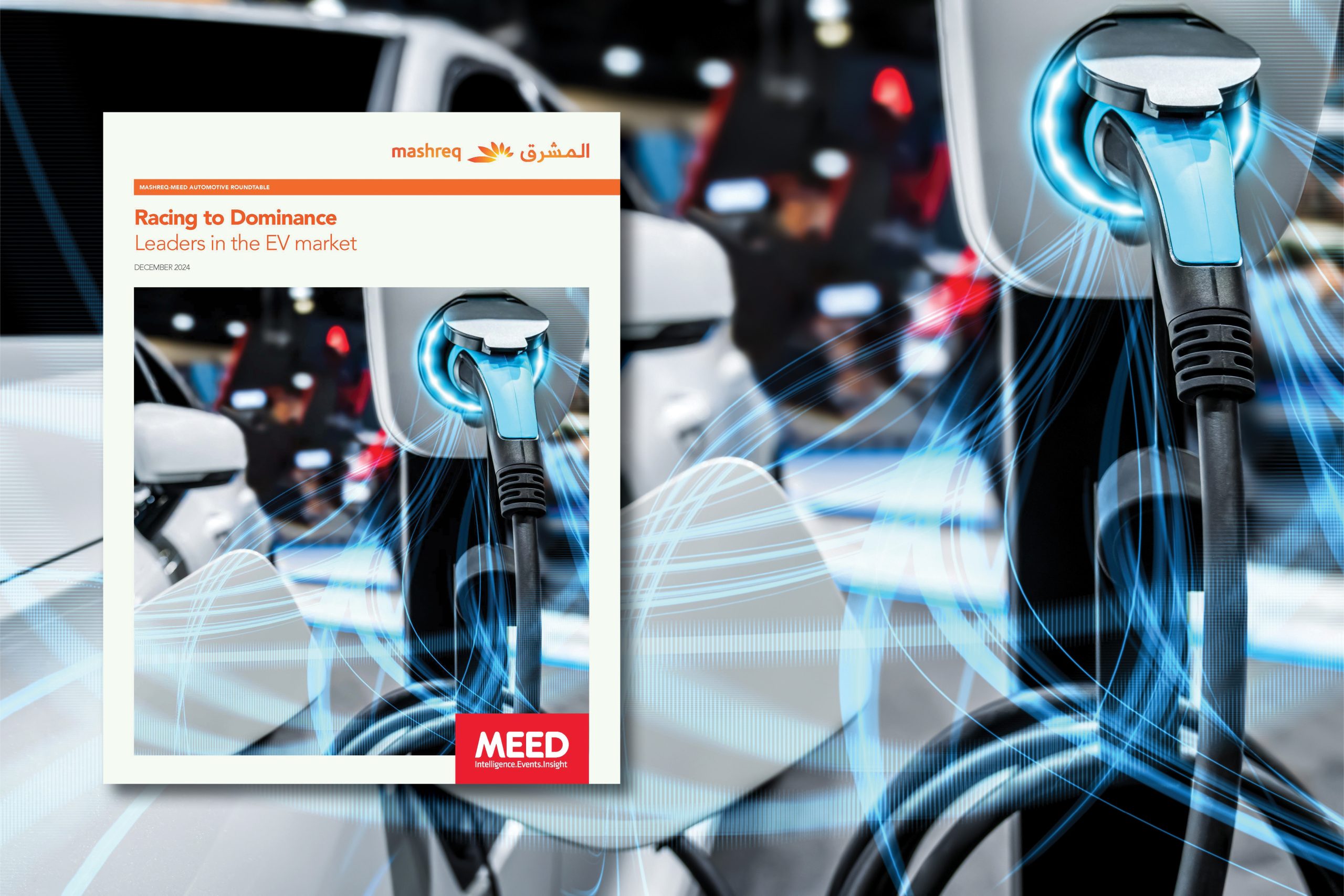Global Automotive Outlook 2025

This Market Talk was written in collaboration with Mashreq as part of the ongoing Mashreq MEED partnership
Navigating industry shifts and innovation for a promising future
By Benjamin Asher, Global Head of Automotive, GlobalData
How are geopolitical shifts and trade policies reshaping global automotive strategies?
Many leading economies are shifting to the right, weakening emissions targets and subsidies for market electrification. Protectionism is also rising to support local economies, protect domestic manufacturers (e.g., in the US and Germany, against China’s global ambitions), and address national security and data privacy concerns, as vehicles increasingly feature cameras, microphones, and sensors.
How are automakers responding to China’s dominance in electric vehicle (EV) innovation and market influence?
Tesla, not China, initially revolutionised the auto industry by proving EVs were viable for mass consumers. However, China now leads global EV development, a move long anticipated. Since the late 2000s, China has aimed to become an automotive powerhouse, encouraging joint ventures with global manufacturers to gain expertise while focusing on next-gen powertrains. This strategy secured its dominance in global battery supply chains. Global automakers have been slow to respond, though this is now beginning to change.
What impact will mergers and partnerships (M&A) have on the future of the automotive sector?
M&A’s will significantly shape the automotive sector’s future. Rising competition, especially from China, and the massive investments required for technological advancements are driving collaborations among traditional automakers, such as Honda and Nissan. Additionally, partnerships with tech companies like Foxconn, Google, Xiaomi, and nVidia are becoming more common, as these players aim to play key roles in the industry’s evolution.
How are automakers navigating rising interest rates, financing challenges and capital allocation for EV expansion?
Automakers face significant financial challenges amid rising interest rates, weakening demand, and the high costs of EV expansion. Many must run parallel programs for EVs and non-EVs, with new EV plants often being more cost-effective than repurposing internal combustion facilities. These high costs have led governments to step in with support, especially as Chinese EV manufacturers, unburdened by legacy infrastructure, intensify competition.
How can automakers balance affordability and innovation amid evolving global consumer demands?
Automakers can balance affordability and innovation by optimising supply chains and achieving economies of scale, as seen in China, where EV costs are already declining. Changing consumer demands are reshaping the industry, with connectivity and software increasingly influencing purchasing decisions. Additionally, evolving ownership models, driven by ride-hailing services and upcoming robotaxis, are prompting automakers to adapt their business strategies to a future where vehicle ownership may no longer be the norm.



